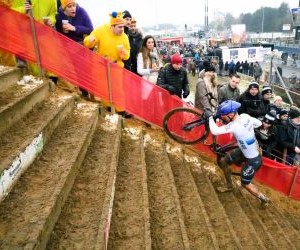Explore the best cycling and bike touring routes in Raleigh, from scenic greenways to wooded trails and smooth city rides—perfect for a vacation on two wheels.
HOW DO I CYCLE SAFELY IN TOURIST-HEAVY AREAS?
Tourist-heavy areas present unique cycling challenges. Unlike predictable commuter traffic, tourist zones involve distracted pedestrians, rental vehicles, and constant congestion. Cyclists must adopt special techniques to protect themselves and ride confidently. This guide explains how to stay visible, anticipate unpredictable behavior, and adapt to crowded streets without sacrificing enjoyment. Whether you’re cycling through historic city centers, beach promenades, or cultural landmarks, these strategies help ensure every ride remains safe, smooth, and stress-free.

Understanding risks in tourist zones
Tourist-heavy areas are unpredictable environments for cyclists. Unlike routine city traffic where patterns emerge, tourist zones are full of first-time visitors navigating unfamiliar streets. Pedestrians often cross without looking, step into bike lanes while snapping photos, or gather in groups that block pathways. Similarly, rental cars, scooters, and tour buses add layers of unpredictability that demand heightened awareness from cyclists.
Cyclists must also contend with infrastructure challenges. In historic or cultural centers, roads may be narrow, poorly marked, or shared with horse-drawn carriages, tuk-tuks, or other tourist-focused transport. Signage can be confusing, and sudden road closures for festivals or parades can redirect traffic without notice.
Common hazards in tourist-heavy areas
Pedestrians stepping into lanes without checking for cyclists.
Rental vehicles driven by inexperienced or distracted tourists.
Congested bike paths crowded with walkers, scooters, or strollers.
Sudden stops or slowdowns near landmarks or viewpoints.
Events and parades that change traffic flow unexpectedly.
These risks mean cyclists cannot rely solely on speed or conventional traffic rules to stay safe. Instead, successful riding in tourist areas comes from anticipating the unexpected and keeping a margin of safety at all times.
Understanding the unique challenges of tourist-heavy zones is the first step to mastering them. Once cyclists accept that unpredictability is part of the landscape, they can adjust their strategies to stay safe and enjoy the ride.
Smart strategies for safe riding
Riding safely in tourist-heavy areas requires a blend of defensive cycling, clear communication, and proactive planning. The key is not to dominate the road but to ride predictably while leaving room for others’ mistakes. Tourists, by nature, are often distracted, so it’s up to cyclists to adapt.
The first rule is visibility. Bright clothing, reflective accessories, and strong bike lights make you stand out in crowded or poorly lit streets. Making eye contact with pedestrians and drivers confirms they’ve noticed you. Signals and gestures should be exaggerated and deliberate, ensuring that even someone unfamiliar with local cycling culture understands your intentions.
Effective techniques for tourist zones
Ride at a moderate pace to allow time for reaction.
Use your bell or voice to alert pedestrians early, especially when passing from behind.
Plan alternative routes around the busiest landmarks during peak hours.
Take the lane when bike paths are blocked, but always assert your position confidently.
Stay alert at intersections where rental vehicles may hesitate or stop suddenly.
Another smart tactic is timing your rides. Tourist areas are busiest during late mornings and afternoons, so riding early or late can reduce exposure to chaos. Similarly, familiarizing yourself with local maps helps you find quieter backstreets or protected bike lanes that bypass crowded hotspots.
Technology can also be your ally. GPS apps with bike-specific routing often suggest safer, less congested paths. However, avoid relying solely on headphones or audio navigation — staying fully aware of your environment is essential.
Ultimately, safe cycling in tourist-heavy zones is about balancing caution with confidence. By combining visibility, communication, and smart route planning, you minimize risks while still experiencing the cultural richness these areas offer.
Adapting mindset and enjoying the ride
Safety in tourist-heavy areas is not only about tactics but also about mindset. Cyclists who expect perfect flow and open roads will only find frustration. Instead, embracing patience and flexibility transforms the experience into a more enjoyable one. Tourist zones, while chaotic, also offer vibrant energy and unique perspectives from the saddle.
One mental strategy is to shift focus from speed to observation. Treat the ride as a cultural exploration rather than a training session. Slowing down allows you to absorb the architecture, street life, and atmosphere that make these places attractive to tourists in the first place. By reframing the purpose of the ride, obstacles become part of the experience rather than constant irritations.
Mindset adjustments for safer cycling
Adopt patience as a safety tool — expect sudden stops and random movement.
Shift your goals: ride for exploration rather than speed in these environments.
View tourists as part of the scenery, not obstacles to defeat.
Celebrate the cultural and scenic highlights you wouldn’t notice at racing speed.
Cyclists who maintain a calm, positive mindset reduce their stress levels and improve decision-making. This perspective also increases empathy for pedestrians who may not understand cycling dynamics. Instead of frustration, interactions become opportunities to showcase courtesy and respect — values that elevate the cycling community’s reputation in tourist regions.
Finally, remember that safety and enjoyment are not mutually exclusive. By anticipating unpredictability and adapting your expectations, you can turn crowded tourist areas into memorable cycling experiences. Sometimes, the best rides are not the fastest but the ones that connect you most deeply with the environment around you.
YOU MAY ALSO BE INTERESTED






